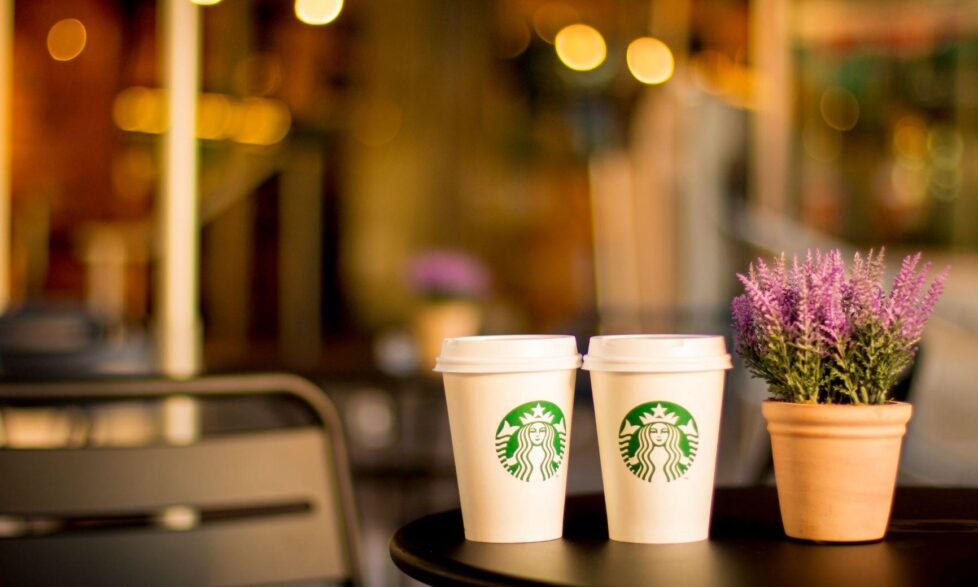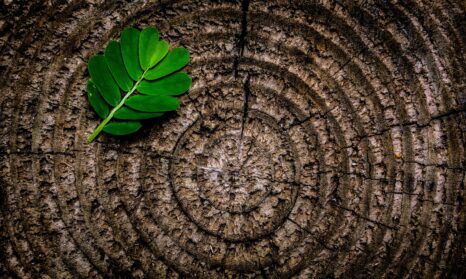A circular answer to the coffee cup challenge
It’s heartening to see how such a simple policy tweak could have such a dramatic impact – albeit so belatedly. Seeing this success, some have started to ask if the same could be achieved with coffee cup waste.
Thanks to campaigns such as Hugh Fearnley-Whittingstall’s War on Waste and Hubbub’s #1moreshot, progress is being made in raising awareness of the huge waste created each year because of disposable coffee cups in café chains. In the UK alone we use more than seven million coffee cups a day – or 2.5 billion a year.
Could coffee cups really become 2017’s plastic bags? Well, probably not – the Government has just rejected a proposal to impose a plastic bag-style levy on disposable cups. Environment minister Therese Coffey says companies like Starbucks and Cafe Nero are already doing enough voluntarily, for example, charging less money, or giving double reward stamps when their customers use their own cups.
Why can’t coffee cups just be recycled?
The journey of the humble coffee cup from recycling bin to recycling plant is a fraught one. For a start, if coffee cups aren’t rinsed after use, the most likely eventuality is for it to be picked out of the stream of plastic, paper and glass in a sorting facility as a contaminate and sent to landfill. Those that do make it to the recycling plant will probably be removed there and either landfilled or incinerated. as the residual liquid left in the cups may well negatively affect the quality of other paper and cardboard waste.
Even if the contamination issue were to be magically solved the bigger challenge for recycling coffee cups is that they are made of a composite material – in other words, they use both ‘biological’ and ‘technical’ materials. This complicates the recycling challenge no end.
Exactly what are ‘biological’ and ‘technical’ materials, I hear you ask. To put simply, biological materials include things like wood, water, bamboo; things that are non-toxic and easily biodegrade. It is for this reason that circular economy geeks like me get excited by new materials such as the mushroom-based material developed - or should I say, grown by Ecovative, which can be engineered into all sort sorts of things, including a board, a packaging material – or even a lighting product.
Technical materials on the other hand are things like plastics, alloys (metals), chemicals and other man made materials that cannot be broken down by nature. These need to be ‘recovered’ and captured, refreshed and re-used using as little energy (from renewable sources), as possible to retain value.
Both paper (a biological material) and plastic (a technical material) are used in the production of the cups. The paper element of the cup could be easily recycled because it is non-toxic and biodegradable, if it could easily be separated. Unfortunately, we need the plastic coating on the inside of the cup to make it waterproof, and the combination of these materials mean recycling is no longer straightforward.
There’s currently only one centre in the UK that can recycle coffee cups – Simply Cups. This Kent-based company currently recycles less than 1 in every 400 cups we dispose of. This would mean you’d have to drink a takeaway coffee every day for just over 14 months before one of your cups would be recycled.
Could a bit of circular economy thinking solve the problem?
Could the solution be to employ some circular thinking and simply ‘design out’ the waste problem? A key principle of the circular economy – unlike waste management – is to think carefully about the materials that are going to be used in a product, making sure they are fit for purpose at the outset, while keeping mind the end of the lifecycle.
In the case of coffee cups, this would include keeping biological and technical materials separate where possible, which would make recycling so much easier. The snag is, this would be a challenge for a container that needs to hold liquids.
But applying circular thinking might also include the development of new products. Take the Frugalpac cup, which is designed with circular principles in mind. The cup is made from recycled paper board without any added chemicals and the cup is designed for disassembly – making it easy to take apart, so when the cup goes to the standard paper mills it separates from the paper in the recycling process.
While this is a great step forward, alone it might not be enough to ensure that the ‘circular’ coffee cup gets recycled. There is currently no mechanical solution readily available to separate paper cups in the sorting facility and so simply recycling a more “circular” product will still not result in the cup reaching its intended destination.
Hubbub’s system-wide campaign
The Hubbub #1moreshot campaign is trying to look at the wider system to find a solution to the problem of disposable coffee cups. Over a three-month period it is trialling 11 special coffee cup-shaped bins in Manchester and encouraging consumers to recycle their used coffee cups in them. By collecting the cups separately in these bins, the process of cleaning and shredding them is made much more simple and solves the contamination problem. Working with Simply Cups they will then transform the used cups into flowerpot holders by mixing the waste coffee cups with other recycled plastics.
In my ideal world we would all use our own reusable cups, but I can’t see that happening for quite some time. So in the meantime I am interested in the results of the #1moreshot trial and the potential impact of new products like Frugalpac. The tricky bit then will be taking this to scale and making it sustainable in the long term.
Learn more about how we are helping businesses apply circular thinking to solve sustainable material issues.
The circular economy: cracking the challenge
The circular economy is one of the biggest challenges - yet most exciting opportunities - for today's businesses. This guide will help your business get started, and explain the benefits of embracing the circular economy
Download PDF







